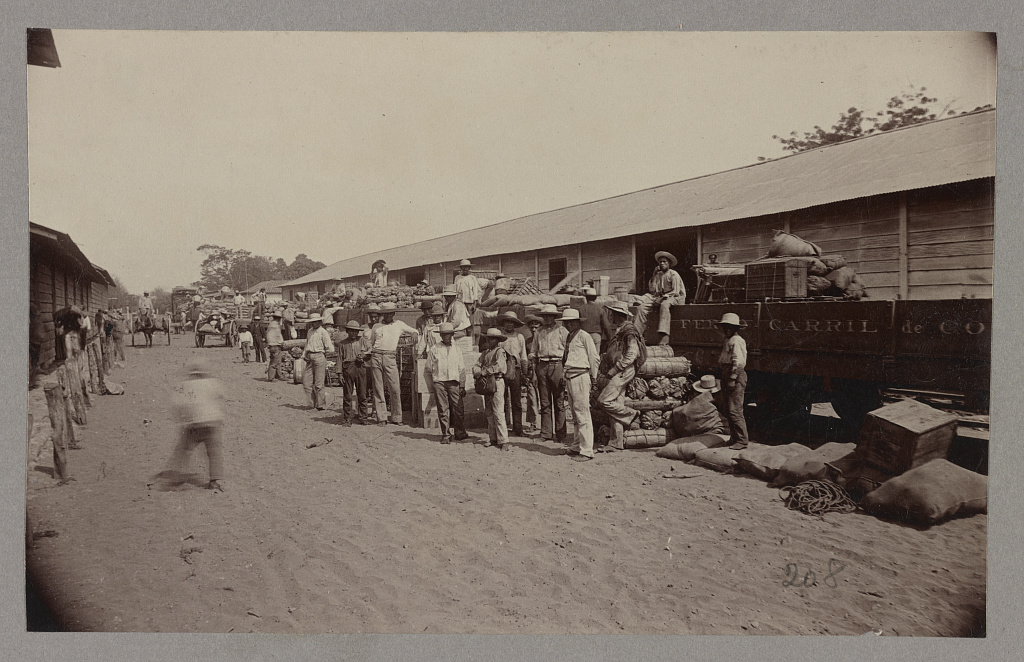
In the late 1800s, Progress gripped Latin America, and Costa Rica was no exception. As we can tell from this 1880-1900 photograph depicting adults and children who interact with a train full of goods, European liberalism had arrived in Costa Rica. As a testament to the power of European culture, which likely tagged along with the introduction of technologies such as rail lines, the people wear European style clothing – button-down shirts tucked into pants.
In 1869, Costa Rica established democratic elections. This image, taken a mere decade or so later, shows the impact that the voice of the liberal, more technologically driven, majority was having on the region. It is also important to note that Puntarenas, the setting of this picture, is a coastal town. It is likely that the railway depicted here would have stretched further inland toward areas of newer farms. Whereas before, Latin America likely was only able to farm near the coast due to the difficulties of transporting large quantities of goods, this railway line would’ve allowed more people to cultivate more goods, resulting in all-around prosperity.
Progress and with it, liberalism, triumphed in all Latin American countries at some point in the late 1800s. Although they were later to the scene, Costa Rica shifted to the new age liberalism in the 1870s following El Salvador which “led the way in the 1850s” (Chasteen 173). This photograph, of European technology and clothing, is emblematic of this victory of liberalism in Latin America, particularly Central America.
Referenced Source:
Chasteen, John Charles. Born in Blood and Fire. 4th ed. New York City, New York: W.W. Norton and Company, 2018.
Primary Source:
Railroad depot, Puntarenas, Costa Rica. Puntarenas Costa Rica, None. [Between 1880 and 1900] Photograph. https://www.loc.gov/item/2017652267/.
